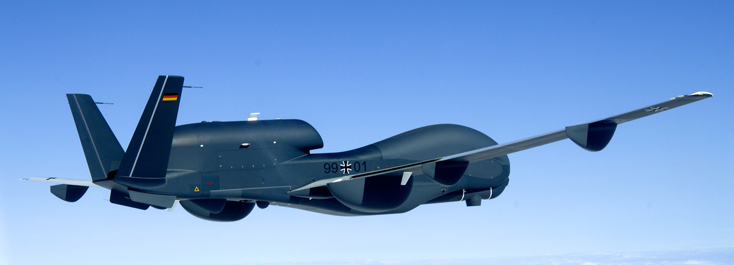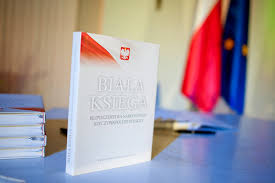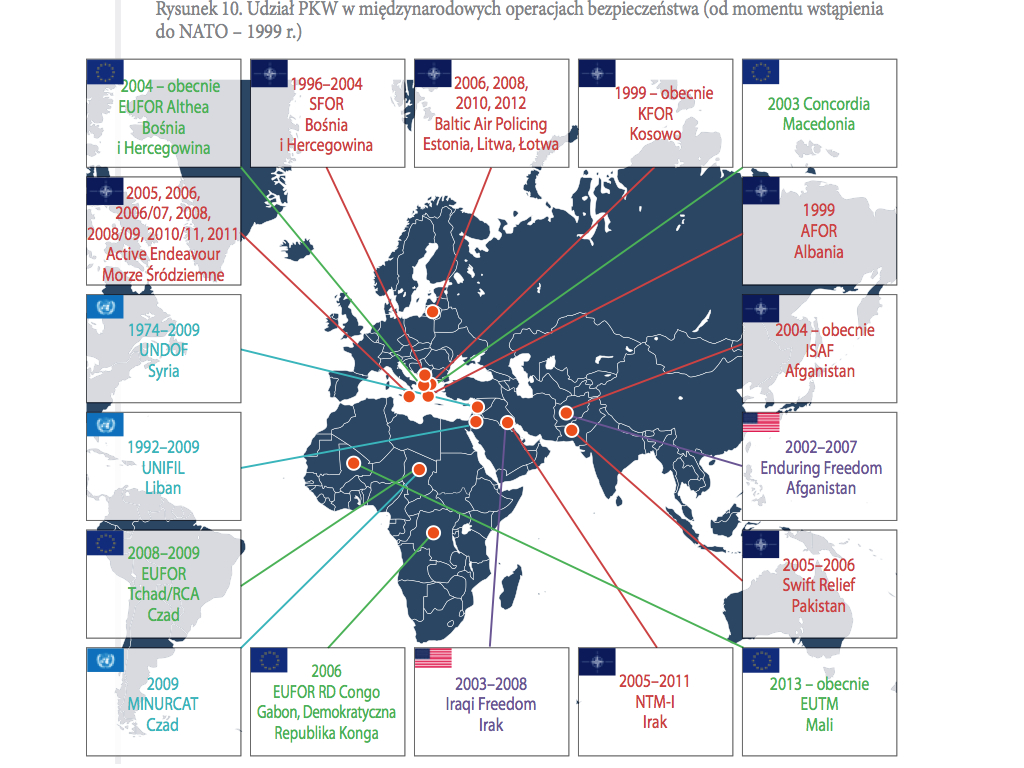Matteo is a researcher at the European Institute for Asian Studies in Brussels. He holds an Italian Master’s Degree in Law and an LL.M. in International Legal Studies from the Georgetown University Law Center, specializing in International and National Security and the Law of the Sea. He has collaborated with the University of Rome and the Italian Foreign Ministry in a training course for the Yemeni Coast Guard for anti-piracy operations in the Gulf of Aden, teaching a course of Law of the Sea, International Law and Security. This article is a part of The Hunt for Strategic September, a week of analysis on the relevance of strategic guidance to today’s maritime strategy(ies).
 As the 2014 Quadrennial Defense Review (QDR) gets underway on the Western side of the Atlantic, the Old Continent is still grasping with the many fundamental changes in the U.S. military strategy, and with a few issues of its own. The economic crisis is far from over in Europe, and while sequestration has taken its toll in the U.S., it is still unclear whether NATO and the EU will eventually enact similar cuts. Moreover, the last European Security Strategy is dated from 2008 (a review of the original 2003 strategy), and Europe finds itself with a desperate lack of leadership in security policy. Its leading country, Germany, seems to have adopted a semi-isolationist approach to foreign policy,1 the United Kingdom is facing an increasing wave of euro-skepticism and general disengagement from security crises, while most of the other countries of Western Europe are still coping with the economic crisis.
As the 2014 Quadrennial Defense Review (QDR) gets underway on the Western side of the Atlantic, the Old Continent is still grasping with the many fundamental changes in the U.S. military strategy, and with a few issues of its own. The economic crisis is far from over in Europe, and while sequestration has taken its toll in the U.S., it is still unclear whether NATO and the EU will eventually enact similar cuts. Moreover, the last European Security Strategy is dated from 2008 (a review of the original 2003 strategy), and Europe finds itself with a desperate lack of leadership in security policy. Its leading country, Germany, seems to have adopted a semi-isolationist approach to foreign policy,1 the United Kingdom is facing an increasing wave of euro-skepticism and general disengagement from security crises, while most of the other countries of Western Europe are still coping with the economic crisis.
As such, the European perspective on the 2014 QDR needs to focus on several aspects: the current and future trends of European Defense spending, the refocusing of U.S. strategies in Europe and globally, NATO and the EU’s role, and possible improved NATO-EU partnerships.
European Defense Spending
The latest study on European Defense spending has revealed that the “number of active-duty military personnel across Europe has declined at a faster rate than has defense spending”,2 although in the last four years “the differential between reductions in manpower and declines in defense spending has started to shrink”.3 Does this mean that Europe has reached its minimum force reduction?4 And if yes, how will it affect further defense cuts?
It is important to note a few issues before delving into a deeper analysis. Europe, as a continent, still has more troops than the U.S. – which is also mainly due to having several national armies, which obviously entail a duplication of positions that the U.S. does not have – and does not benefit from a shared military budget, again due to national constraints.
That being noted, it is still likely that European countries will proceed to further cuts in the military,5 possibly aiming for more specialized and technologically advanced forces, basically perpetuating the typical European approach “quality is better that quantity”. It is important to note that such cuts, as it is the case in the U.S., are also often borne more from a political need than a strategic one, thus it remains to be seen if quality will replace quantity for all European countries. Moreover, it will be important to monitor the retirement plans for the reduction of army personnel. In other words, once cuts are enacted, the hiring policies of the various countries will have to be closely analyzed, as European countries have stronger welfare policies which could severely constrain the quality push of leaner military forces.
A latest theme in terms of improvement of training and equipment is the current focus on Key Enabling Technologies,6 which aims at retaining the European edge in terms of technological advancement and R&D through improved coordination, at least within the European Union. Given the traditional reticence of some member states to collaborate in the areas of national and regional security, the effectiveness of such coordination is not assured.
In other words, the situation in Europe is uncertain, surely due to the economic crisis, but also due to the upcoming 2014 elections for the European Parliament, the end of the term for the European Commission and Council (the executive branches of the European Union), also in 2014, which will surely affect future defense strategies.
Refocusing of U.S. Strategies
From this side of the Atlantic, it is unclear which are the priorities for the U.S. in terms of defense and general strategic deployments. Many were disoriented at the time of the Pivot to the Pacific, as the policy was not completely explained, and seemed to bypass the usual strategic channels (especially in an area where NATO would not be deployed). To this day, it is still unclear what the U.S.’ strategic priorities are. Apart from standard declarations underlining the long-standing relationship with Europe and the importance of NATO it is hard to read the U.S. foreign policy and its inclusion of Europe. The recent deployments of forces in the Mediterranean are the perfect example. European countries almost forced the U.S. to intervene in Libya, and only after the initial strikes was NATO was involved completely. Conversely, the U.S. took a policy decision on Syria, trying to involve European allies in a not very coordinated manner, with the result of losing support from both the interventionist and non-interventionist sides.
While some claim that the 2014 QDR will reshape the concept of U.S. bases in the world, maybe pushing for further cuts abroad in favor of rapidly deployable forces,7 it is difficult for Europe to anticipate the effects of possible re-deployments. European countries understand very well that with the end of the Cold War the continent lost much of its value as a strategic territory, and the many U.S. bases across Europe may be closed or re-deployed at any time, but it is also clear that such decisions would only worsen the strategic relations across the Atlantic if taken unilaterally.
Regardless of the possible outcome of the 2014 QDR, it is apparent that improved coordination with Europe would be cost-effective and beneficial to the U.S. Moreover, NATO was specifically designed to protect transatlantic security, thus it constitutes the perfect forum for this sort of discussion or negotiation.
NATO and EU: Their Roles and Possible Partnerships
As much as European countries have understood the shifting of importance of the continent after the Cold War, NATO too has had to cope with evolving times. While the past 20 years saw the organization’s active involvement in many areas, it is apparent that today’s transatlantic relations call for a reshaping of the organization in a definitive fashion: underlining its importance as a transatlantic forum, as a standing warden of Western security, or as a mere relic of different times.
The deterrent function of NATO is no longer needed. Moreover, the general push for quality over quantity is bound to affect the organization as well, likely in the form of rapidly deployable forces, rather than cumbersome bureaucratic mechanisms and bases across the continent. In these terms, the 2010 Strategic Concept8 emphasized NATO’s renewed role in modern challenges but brought about little changes.9 From the European citizens’ perspective, NATO is a body without a purpose in times of peace and disengagement, often forgotten when it is not active in military operations. As such the organization is facing severe communication issues, in positioning itself as reliable, authoritative and effective institution in the area of security and defense. In these terms, a strategic partnership with the EU would enhance its effectiveness, provide low-cost instruments and structures, and enhance NATO’s standing as an actor in the transatlantic setting, rather than a standing secretariat for setting up of multinational forces.
The European Union, as noted above, is also facing several issues due to the crisis, general skepticism of citizens and member states, and a period of transition to new leadership in 2014. Moreover, relations between DoS, the EU, and the White House are barely noticeable. Internally, the EU has yet not revised its Security Strategy (EUSS)10 since 2008.11 A Maritime Security Strategy should be issued at the end of 2013, when also the European Council (the periodic meetings between the Head of States of the Member States deciding the general policy guidelines for the Union) should discuss the 2020 objectives and general EU policies. Moreover, the current European leaders have missed several opportunities for improving the Union’s standing in the area of security. The creation of the High Representative of the Union for Foreign Affairs and Security Policy position, empowered also as Vice President of the Commission,12 was supposed to boost the effects of a Common Defense and Security Policy (CDSP), no tangible results have been produced so far. It is likely that when the current HRVP leaves office in 2014 the European CDSP efforts, especially in the form of a EUSS, will be approached differently and with more assertiveness.
As for EU-NATO partnerships, so far not much has been accomplished. The institutions tend to cooperate in practice (for instance in Somalia), but there is a severe lack of coordination in Brussels, where the institutions generally tend not to engage with each other. It is in the interest of the EU to strengthen its partnership with NATO, and in the interest of the U.S. to help implement this rapprochement, involving more actors in the Alliance and relating to the EU and NATO mainly in terms of security partnerships – at least at the organizational level. In terms of security strategy, both NATO and the EU are facing issues over properly representing the will of their state’s citizens and criticism for lack of effectiveness, so don’t expected too much in terms of actual involvement, more is likely on the side of formal partnership agreements.
The current European security situation is particularly static at the moment, mostly waiting for fundamental policy changes brought about by the combination of the European 2014 elections and upcoming high-level political meetings. Moreover, expectations for the 2014 QDR are lowered by the uncertain internal situation and more pressing local issues, namely the economic crisis and growing unrest for unpopular austerity measures. It is indicative, after all, that the most relevant regional documents in terms of security strategy, both for NATO and the EU, are reviews of concepts of the last decade. Even on those terms, many European countries remain extremely favorable to U.S. security objectives and will continue to constitute the staunchest allies for the U.S., and the 2014 QDR will definitely affect their future strategic concepts and policies.
Matteo Quattrocchi holds a LL.M. from Georgetown Law as well as a Master’s Degree in European and International Law from Luiss in Rome, Italy. He is currently a Junior Researcher at the European Institute for Asian Studies, after having worked in the NGO and private sector and taught in Rome and Washington, D.C. He is specialized in International and National Security Law and Policies, EU-Asia Relations and Maritime Security Law and Policies.
————————————————————————————————————————-
1. Benjamin Weinthal, Home Alone, Foreign Policy, 24 September 2013, retrieved from http://www.foreignpolicy.com/articles/2013/09/23/home_alone_germany_angela_merkel_foreign_policy.
2. Center for Strategic and International Studies, European Defense Trends 2012, December 2012, retrieved from http://csis.org/publication/european-defense-trends-2012.
3. Ibid.
4. Ibid.
5. Supra note 1.
6. For more information please visit http://ec.europa.eu/enterprise/sectors/ict/key_technologies/
7. Center for Strategic and International Studies, Preparing for the 2014 Quadrennial Defense Review, March 2013, retrieved at http://csis.org/files/publication/130319_Murdock_Preparing2014QDR_Web.pdf.
8. NATO, Strategic Concept for the Defence and Security of the Members of the North Atlantic Treaty Organization 2010, Lisbon, 19-20 November 2010. Retrieved from http://www.nato.int/strategic-concept/pdf/Strat_Concept_web_en.pdf.
9. Istituto Affari Internazionali, Swedish Institute of International Affairs, Fondation pour la Recherche Stratégique, Center for Strategic and International Studies , EU-U.S. Security Strategies. Comparative scenarios and recommendation, February 2013, retrieved from http://csis.org/publication/eu-us-security-strategies.
10. European Union, European Security Strategy, December 2003, retrieved from http://www.consilium.europa.eu/uedocs/cmsUpload/78367.pdf
11. European Union, Report on the Implementation of the European Security Strategy – Providing Security in a Changing World, December 2008, retrieved from http://www.consilium.europa.eu/ueDocs/cms_Data/docs/pressdata/EN/reports/104630.pdf
12. While the High Representative is the head of the European External Action Service, the European version of the Department of State, he or she is also the Vice-President of the Commission, the main executive branch of the Union, thus putting the HRVP in the position of coordinating foreign and internal policy.


 “It is an undeniable reality that in today’s network and information society people are both more assertive and more independent than in the past. This, combined with the need to reduce the budget deficit, means that the classical welfare state is slowly but surely evolving into a participation society. … Achieving a ‘prudent level of public debt’ … is and will remain crucial. … If the debt grows and the interest rate rises, these payments will put more and more pressure on our economic growth, on the affordability of public services and on people’s incomes. … Unless we do something the budget deficit will remain too high. The shift towards a participation society is especially visible in our systems of social security and long-term care. In these areas in particular, the classical post-war welfare state produced schemes that are unsustainable in their present form and which no longer meet people’s expectations.”
“It is an undeniable reality that in today’s network and information society people are both more assertive and more independent than in the past. This, combined with the need to reduce the budget deficit, means that the classical welfare state is slowly but surely evolving into a participation society. … Achieving a ‘prudent level of public debt’ … is and will remain crucial. … If the debt grows and the interest rate rises, these payments will put more and more pressure on our economic growth, on the affordability of public services and on people’s incomes. … Unless we do something the budget deficit will remain too high. The shift towards a participation society is especially visible in our systems of social security and long-term care. In these areas in particular, the classical post-war welfare state produced schemes that are unsustainable in their present form and which no longer meet people’s expectations.” Who should be writing our next national defense strategy? If we built our team as usual, we will get simply a conventional wisdom, jargon-filled, programmatic-defending, and buzzword-filled work that will be quoted a lot, read less, and almost never fully understood.
Who should be writing our next national defense strategy? If we built our team as usual, we will get simply a conventional wisdom, jargon-filled, programmatic-defending, and buzzword-filled work that will be quoted a lot, read less, and almost never fully understood. What I am interested in is if there will be a “Minority Report” of any kind. The group’s evil twin Skippy – their other-universe Spock sporting a goatee and looking askance at all that seems slightly off. Will there be a COA-A and a COA-B for public debate?
What I am interested in is if there will be a “Minority Report” of any kind. The group’s evil twin Skippy – their other-universe Spock sporting a goatee and looking askance at all that seems slightly off. Will there be a COA-A and a COA-B for public debate? Keep the group relatively small compared to the “official” group. Most important, have it work outside FL, CA, WA, HI, VA, and MD. Better yet, ship them off to an ICBM command silo in South Dakota. Give them a little “The Shining” vibe to their deliberations.
Keep the group relatively small compared to the “official” group. Most important, have it work outside FL, CA, WA, HI, VA, and MD. Better yet, ship them off to an ICBM command silo in South Dakota. Give them a little “The Shining” vibe to their deliberations.

